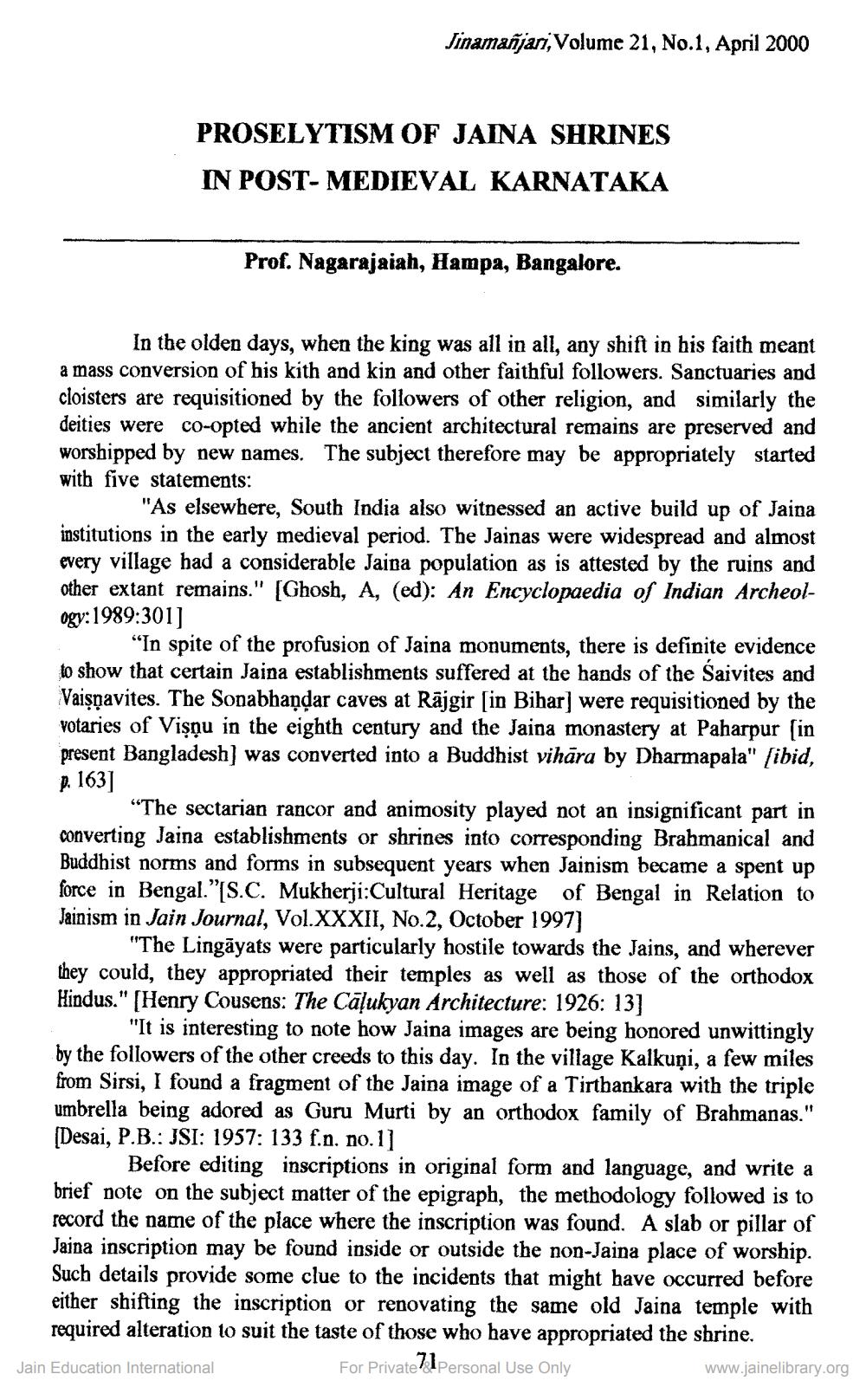________________
Jinamañjari, Volume 21, No.1, April 2000
PROSELYTISM OF JAINA SHRINES IN POST-MEDIEVAL KARNATAKA
Prof. Nagarajaiah, Hampa, Bangalore.
In the olden days, when the king was all in all, any shift in his faith meant a mass conversion of his kith and kin and other faithful followers. Sanctuaries and cloisters are requisitioned by the followers of other religion, and similarly the deities were co-opted while the ancient architectural remains are preserved and worshipped by new names. The subject therefore may be appropriately started with five statements:
"As elsewhere, South India also witnessed an active build up of Jaina institutions in the early medieval period. The Jainas were widespread and almost every village had a considerable Jaina population as is attested by the ruins and other extant remains." [Ghosh, A, (ed): An Encyclopaedia of Indian Archeology:1989:301]
"In spite of the profusion of Jaina monuments, there is definite evidence to show that certain Jaina establishments suffered at the hands of the Saivites and Vaiṣṇavites. The Sonabhandar caves at Rajgir [in Bihar] were requisitioned by the votaries of Visņu in the eighth century and the Jaina monastery at Paharpur [in present Bangladesh] was converted into a Buddhist vihāra by Dharmapala" [ibid, p. 163]
"The sectarian rancor and animosity played not an insignificant part in converting Jaina establishments or shrines into corresponding Brahmanical and Buddhist norms and forms in subsequent years when Jainism became a spent up force in Bengal."[S.C. Mukherji:Cultural Heritage of Bengal in Relation to Jainism in Jain Journal, Vol.XXXII, No.2, October 1997]
"The Lingayats were particularly hostile towards the Jains, and wherever they could, they appropriated their temples as well as those of the orthodox Hindus." [Henry Cousens: The Calukyan Architecture: 1926: 13]
"It is interesting to note how Jaina images are being honored unwittingly by the followers of the other creeds to this day. In the village Kalkuņi, a few miles from Sirsi, I found a fragment of the Jaina image of a Tirthankara with the triple umbrella being adored as Guru Murti by an orthodox family of Brahmanas." [Desai, P.B.: JSI: 1957: 133 f.n. no.1]
Before editing inscriptions in original form and language, and write a brief note on the subject matter of the epigraph, the methodology followed is to record the name of the place where the inscription was found. A slab or pillar of Jaina inscription may be found inside or outside the non-Jaina place of worship. Such details provide some clue to the incidents that might have occurred before either shifting the inscription or renovating the same old Jaina temple with required alteration to suit the taste of those who have appropriated the shrine. For Private Personal Use Only
Jain Education International
www.jainelibrary.org




